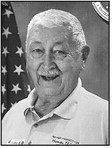Patricia Ann Clark


1932-2024
Patricia Ann Clark 91, passed away peacefully on Sept. 19, 2024 at Colonial Center in Colby under the care of Hope Hospice and Palliative Care. “Pat” was born in Indiana to George and Catherine (Morine) Trimner on Nov. 10, 1932. As a child, the family moved to Illinois and then moved to Fort Atkinson.
She graduated from Fort Atkinson High School. She worked at various jobs, her favorite one being a telephone operator.
She married Raymond Clark in Burlington on Dec. 16, 1959. After getting married, Pat and her husband began farming. They later moved to the Colby area and continued to farm alongside one another. When her father became ill, she moved to the town of Hammel to help her mother. In 1997, she moved to the town of Holway to be closer to her son and family.
Pat loved the outdoors, farming and riding her horses. She also liked to garden and mow the lawn.
She will be dearly missed by her son, Michael (Brenda); grandson, Paul Clark; and granddaughter, Kasey Clark, all of Medford.
She was preceded in death by her parents; her husband; siblings Catherine Schmalfeldt, Harold Trimner, Lois Durkee and Penny Trimner in infancy; sister-in-law, Patricia Trimner; brothers-in-law Louis Scmalfeldt and Robert “Red” Durkee; and a stepdaughter Linda Kinbaum. Also, her favorite dog, Bits.
On October 26, at 12:30 p.m., there will be a celebration of her long life at the VFW Hall, 240 8th St, Medford. lnurnment will be at the Abbotsford Cemetery next to the love of her life, Ray.
Paid Obituary 159271






